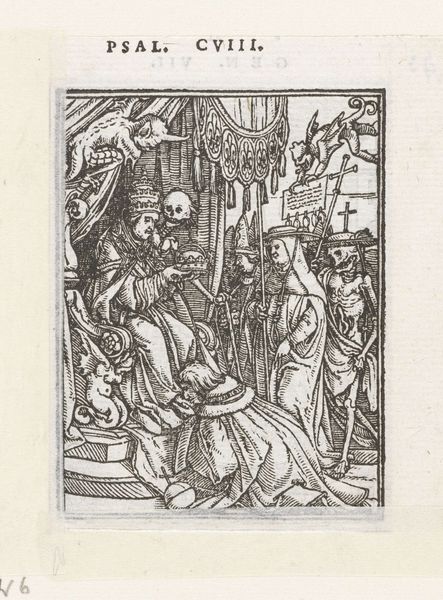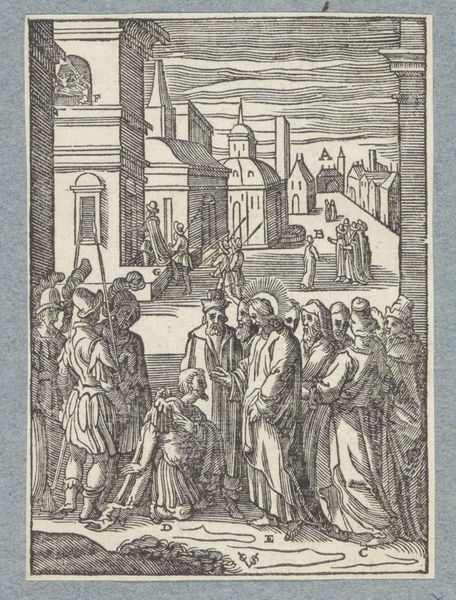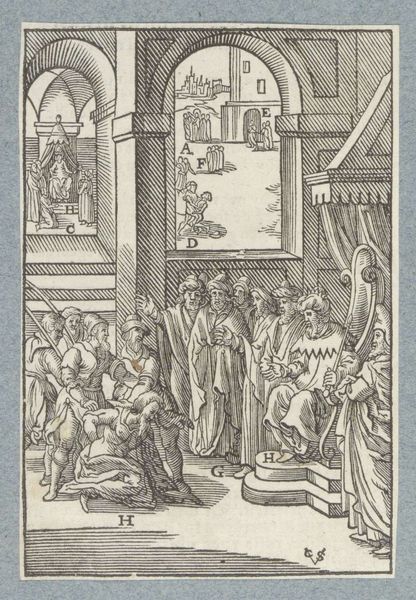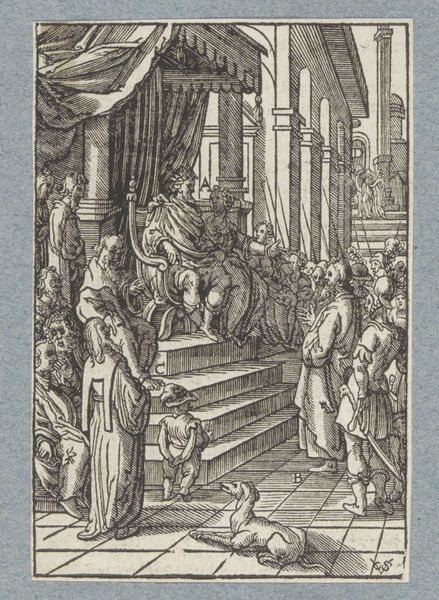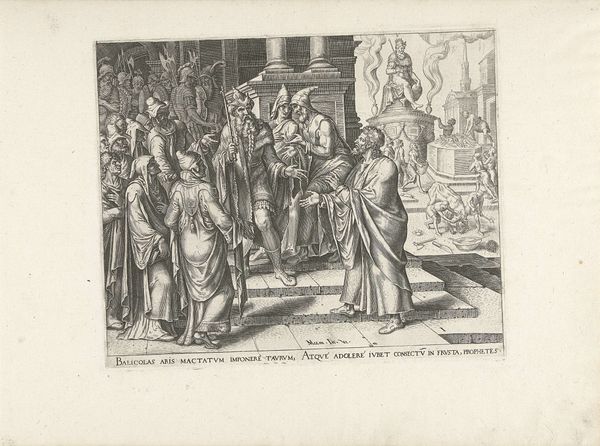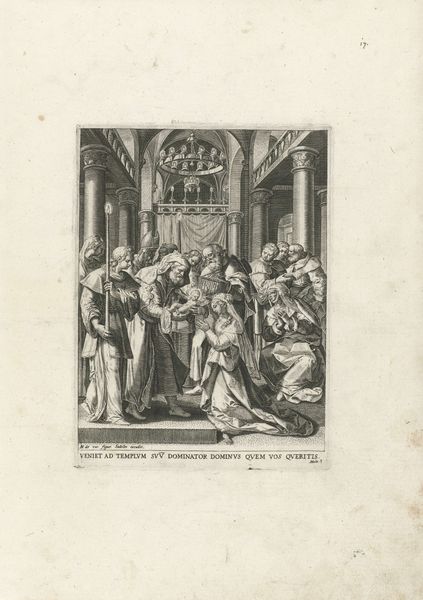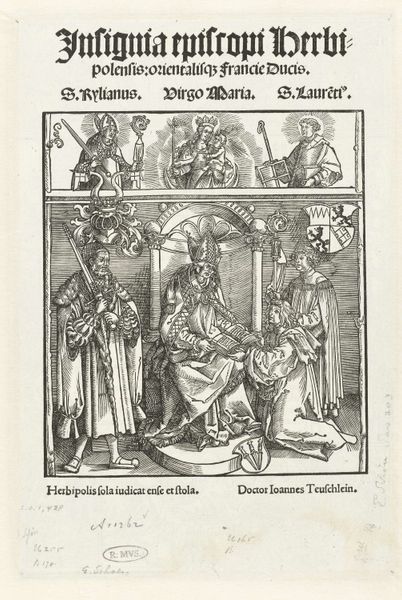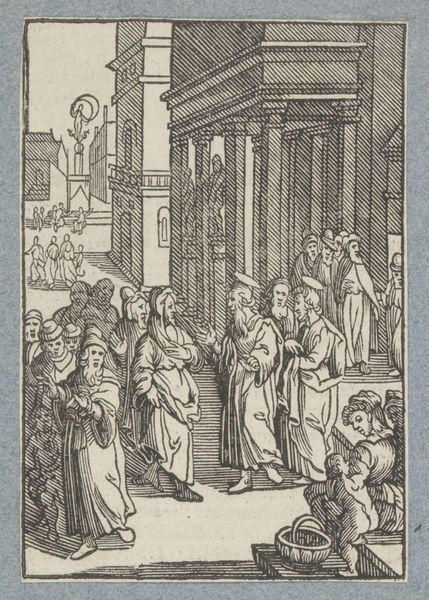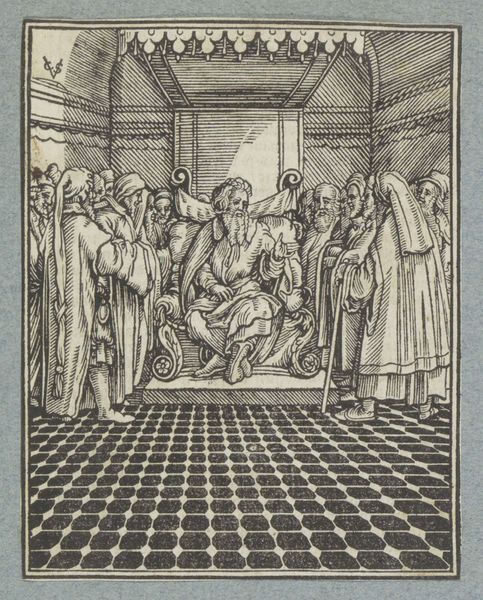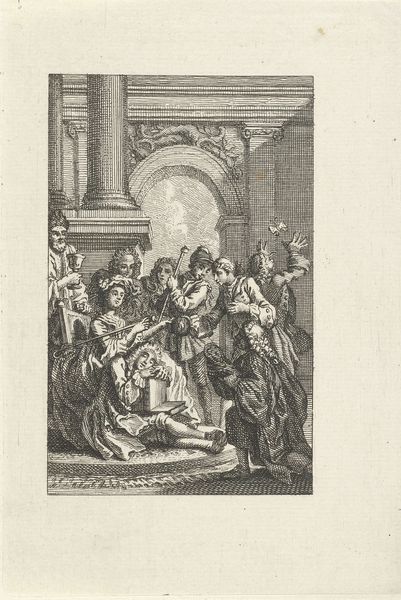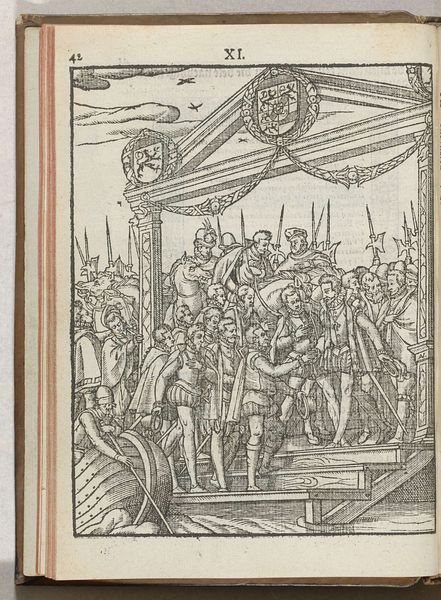
print, woodcut
#
medieval
#
allegory
#
narrative-art
# print
#
figuration
#
vanitas
#
woodcut
#
line
#
history-painting
#
northern-renaissance
Dimensions: height 65 mm, width 50 mm
Copyright: Rijks Museum: Open Domain
Curator: Editor: This is "The Empress and Death" by Hans Holbein the Younger, made between 1524 and 1538. It's a woodcut print. There's something so stark about the contrast, both visually and thematically. The ornate clothing against the figure of Death... How do you read this piece? Curator: Holbein's choice of the woodcut medium itself speaks volumes. Consider the labor involved: the carving, the printing, the potential for mass production. It brings the concept of "memento mori"—a reflection on mortality—to a wider audience. It democratizes death, if you will. How does that reading change your initial impression? Editor: That’s fascinating. It's not just about the image, but about the material process of creating and distributing it. It's no longer a unique work for a patron but an accessible piece about the inescapable nature of life and death for many. I hadn't thought about it that way. I had just viewed it as a snapshot, if you will, depicting the medieval “dance of death” motif. Curator: Precisely. And within that distribution, who is consuming the print? Why is it important for a growing literate public, and artisans involved in its production and distribution, to consider that Death dances with an Empress? Holbein points us toward the socio-economic conditions allowing this kind of allegorical work to flourish in early modern Europe. Notice, also, the architecture in the background – what could it tell us about the material world shaping this "dance?" Editor: It looks like a rather stately building, imposing too, with intricate facades, and probably hints at power or, in this context, something inevitably lost. Looking at it now, I am very impressed with all the steps in this artwork, all those craftmanship inputs. What's the social significance of death becoming a commodity through these printed images? Curator: A key element to ponder is that very transformation! We move from a singular, religious meditation on mortality to something disseminated through increasingly complex systems of labor and consumption. This little print actually carries considerable material weight when viewed through this lens. Editor: Absolutely, this piece is way more involved than I initially understood! I will think about how materials influence message. Curator: Indeed. Considering materiality encourages us to move beyond a purely aesthetic reading and explore art's complex relationship with its cultural and historical context.
Comments
No comments
Be the first to comment and join the conversation on the ultimate creative platform.
